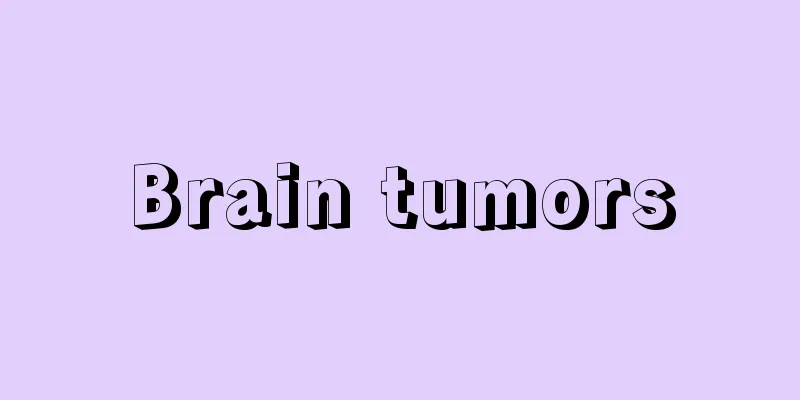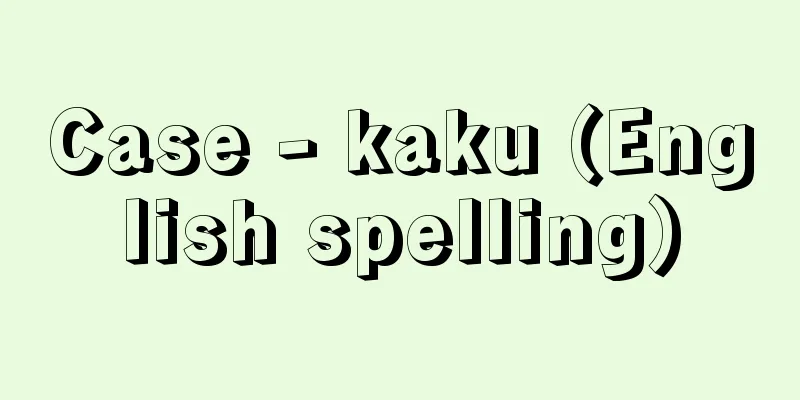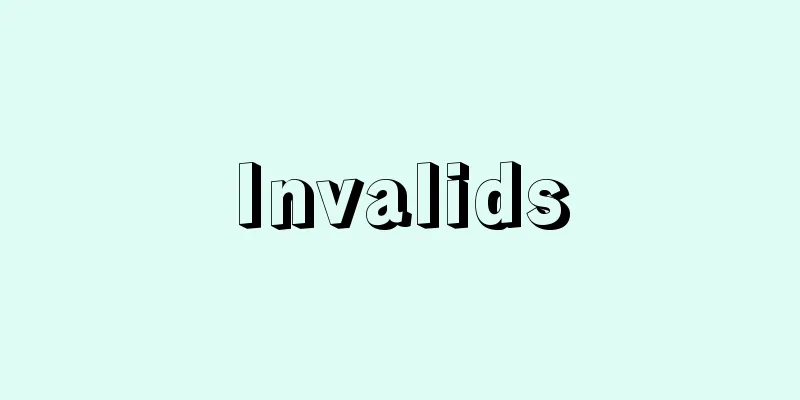Brain tumors

|
What kind of disease is it? ●Main symptoms and course Brain tumors are a disease in which abnormal cells grow in brain tissue. There are various types, but they can be broadly divided into malignant and benign. Tumors that develop within the brain parenchyma are generally malignant, and if not treated appropriately, they can affect the respiratory center and lead to death. This includes gliomas. There are also malignant tumors that develop when cancer metastasizes from other organs. Metastatic brain tumors are the final stage of cancer (stage IV), and treatment is difficult. The goal is to improve quality of life (QOL) and extend survival time. On the other hand, tumors that occur outside the brain parenchyma are generally benign, can be cured by surgical removal, and do not recur. Benign tumors include meningiomas, pituitary adenomas, and neurilemmomas. Regardless of whether the disease is malignant or benign, the three main symptoms are headache, nausea, vomiting, and papilledema (swelling of the fundus). The headache often occurs early in the morning and subsides in the evening. Child patients may vomit without feeling nauseous. Depending on the location of the tumor, various local symptoms may appear, including double vision, dizziness, tinnitus, seizures, impaired consciousness, speech disorders, and hemiplegia. ● Causes of the disease and how symptoms develop Apart from metastatic disease, the causes are not clearly understood. Possible causes include viral infections and abnormalities in the development of intracranial cells. As the brain is covered by the hard skull, as the tumor gradually grows, the pressure inside the skull increases, which leads to symptoms such as headaches, nausea, vomiting, and papilledema. As the tumor grows, it puts pressure on normal brain tissue, causing the progression of neurological symptoms. Decreases in concentration and memory are observed. ●Characteristics of the disease The incidence rate of brain tumors is about 3.5 people per 100,000 population per year, with malignant and benign tumors occurring almost half and half (based on 2011 cancer incidence data from the National Cancer Center Cancer Information Service's "Cancer Registration and Statistics" regional cancer registration nationwide estimates). Malignant tumors are most common, with a range of severity from mild to severe. Benign tumors are often meningiomas, which develop from the meninges on the surface of the brain. It is a disease that can occur in people of all ages, from newborns to the elderly. EBM checks on common treatments and care [Treatment and care] Use of adrenal corticosteroids (treatment of acute cerebral edema) [Rating] ☆☆☆☆☆ [Evaluation points] In cases of acute cerebral edema, corticosteroids are used. Their effectiveness has been confirmed in highly reliable clinical studies. However, the purpose is to reduce the edema around the tumor, and it cannot be expected to shrink the brain tumor itself. They can be taken orally or by injection, and injections are used when oral administration is not possible. Side effects can occur when corticosteroids are used in large amounts over a long period of time, so it is better to use them for a short period of time in the hope of achieving temporary results. (1) [Treatment and care] Use anticonvulsants (treatment of acute seizures) [Rating] ☆☆☆ [Evaluation points] It is said that 10-40 percent of patients with brain tumors have convulsions as their first symptom, and 90 percent of patients will experience convulsions during the course of their illness. If a patient has a convulsive seizure, or if the brain tumor is in a location where convulsions are likely to occur, anticonvulsants are used. They have no effect on brain tumors themselves, but clinical studies have confirmed that once a convulsive seizure has occurred, it is necessary to take them as a preventative measure. Phenytoin, carbamazepine, or sodium valproate are used as anticonvulsants. (2)-(4) [Treatment and care] The tumor is removed by surgery [Rating] ☆☆ [Evaluation points] Surgical removal is the treatment that is most likely to shrink or eliminate the tumor. Ideally, the entire tumor can be safely removed, but malignant tumors always have the risk of recurrence. Furthermore, whether malignant or benign, if a brain tumor is located in a place that is difficult to operate on, it may be necessary to take into consideration the damage to the nerves caused by the surgery and only remove part of the tumor, or perform the surgery in several stages. In the case of a benign tumor, the progress may be monitored without surgery. In the case of a benign tumor that is small and causing no symptoms, the progress may be monitored carefully, and surgery may be considered only if it grows larger or symptoms appear. (5)(6) [Treatment and care] Perform radiation therapy [Rating] ☆☆☆ [Evaluation points] In principle, radiation therapy is an adjuvant therapy to surgery, and whether it is effective or not depends on the type of brain tumor. Some have been confirmed to be effective by reliable clinical studies, while others have not. Radiation therapy is usually performed after the brain tumor has been removed by surgery. In the case of malignant brain tumors, radiation therapy is performed to prevent recurrence, but recurrence cannot always be prevented. In the past, radiation therapy was also performed on benign tumors, but it is no longer performed in recent years due to consideration of side effects. (7) [Treatment and care] Chemotherapy [Evaluation] ☆☆ [Evaluation Points] Chemotherapy is the treatment of brain tumors using anticancer drugs, and is performed on malignant brain tumors. Although new anticancer drugs are constantly being developed, there are currently no drugs that can completely cure brain tumors. However, there are some anticancer drugs that can prevent or delay recurrence depending on the type of brain tumor. Anticancer drugs can cause serious side effects, so it is necessary to consult with your doctor before proceeding with treatment. (8) [Treatment and care] Gamma knife radiation therapy [Evaluation] ☆☆ [Evaluation Points] Gamma knife is a method in which a device with a cobalt-60 radiation source is fixed to the head, and the gamma rays emitted from it are focused on the tumor. This treatment is usually suitable for tumors measuring 3 centimeters or less. It is performed on benign brain tumors that are difficult to remove by surgery, multiple metastatic brain tumors, and patients with poor overall health and the elderly. However, it can take a long time for the treatment to be effective, and there are also cases in which it is ineffective. Although it is a treatment with few side effects, careful consideration must be given to its suitability. (9) Checking commonly used drugs with EBM Corticosteroids [Drug name] Rinderon (betamethasone) (1) [Rating] ☆☆☆☆☆ [Evaluation points] In cases of acute cerebral edema, corticosteroids are taken orally or injected. They do not shrink the brain tumor itself, but their effectiveness in reducing edema around the tumor has been confirmed by highly reliable clinical studies. However, side effects appear when used in large amounts over a long period of time, so it is best to use them for a short period of time only, expecting a temporary effect. Anticonvulsant [Drug name] Tegretol (carbamazepine) (2)-(4) [Rating] ☆☆☆ [Drug name] Depakene (sodium valproate) (2)-(4) [Rating] ☆☆☆ [Drug name] Aleviatin/Hydanthol/Phenytoin (Phenytoin) (2)-(4) [Rating] ☆☆☆ [Evaluation points] Clinical studies have confirmed that taking anticonvulsants as a preventative measure is effective if a person has had even one seizure. However, there is no evidence that using anticonvulsants as a preventative measure is effective in people who have never had a seizure. Anticancer drug [Drug name] Nidoran (Nimustine hydrochloride) (10) [Rating] ☆☆☆ [Drug name] Oncovin (vincristine sulfate) (11) [Rating] ☆☆ [Drug name] Randa/Briplatin (cisplatin) (11) [Rating] ☆☆☆ [Drug name] Lastet/Bepcid (etoposide) (12) [Rating] ☆☆☆ [Drug name] Paraplatin (Carboplatin) (12) [Rating] ☆☆☆ [Drug name] Procarbazine hydrochloride (procarbazine hydrochloride) (11) [Rating] ☆☆ [Drug name] Temodar (temozolomide) (13) [Rating] ☆☆☆ [Drug name] Avastin (bevacizumab) (14) [Rating] ☆☆☆ [Evaluation points] There are no anticancer drugs that can completely cure brain tumors, but clinical studies have confirmed that, depending on the type of brain tumor, they can delay recurrence and extend survival time. Overall, it is currently the most reliable treatment method .<br /> Surgical suitability is determined by the type, size, location, etc. of the tumor. The treatment method chosen will vary greatly depending on the cell/tissue type (benign or malignant) of the brain tumor, and whether it is single or multiple. Even if it is benign, like a meningioma, if it grows too large within the limited space inside the skull, it can put pressure on normal brain tissue, causing neurological symptoms and symptoms of increased intracranial pressure (headache, nausea/vomiting, papilledema), and so it will need to be removed surgically. If the tumor is localized, it is usually removed surgically and then treated with radiation therapy on the whole brain. Although the appropriate treatment depends on the type, size, and location of the tumor, surgery is the treatment most likely to shrink or eliminate the tumor. Radiation therapy such as gamma knife may be selected Radiation therapy such as gamma knife or linac is used for tumors in locations where surgery is difficult or for patients with poor overall condition. These are methods of treating lesions by pinpointing and concentrating a large dose of radiation from a three-dimensional direction on the tumor. Gamma knife uses gamma rays with a cobalt-60 radiation source, while linac uses X-rays. Because radiation is directed only at the tumor, side effects on surrounding healthy tissue are minimal. Anticancer drugs that do not cure brain tumors completely, but prevent recurrence and slow progression Unfortunately, there are currently no anticancer drugs that can cure brain tumors completely. However, highly reliable clinical studies have recently confirmed that some types of brain tumors can delay recurrence and extend survival time. However, anticancer drugs can cause serious side effects, so they should be used with caution and after careful consideration. Corticosteroids are effective for symptoms of increased intracranial pressure Drug therapy is used to treat localized neurological symptoms caused by brain tumors. Corticosteroids are effective for symptoms of increased intracranial pressure caused by cerebral edema, such as headaches, nausea, vomiting, and papilledema. However, because of side effects, it is best to avoid using large amounts for long periods of time. Anticonvulsants are also used to treat seizures, which are experienced by 90% of patients. They are used as a preventative measure if the patient has had a seizure in the past. (1)Vecht CJ, Hovestadt A, Verbiest HB, et al. Dose-effect relationship of dexamethasone on Karnofsky performance in metastatic brain tumors: a randomized study of doses of 4, 8, and 16 mg per day. Neurology. 1994;44:675-680. Source: "EBM: A book that explains correct treatment" Information about the book "EBM: A book that explains correct treatment" |
|
どんな病気でしょうか? ●おもな症状と経過 脳腫瘍(のうしゅよう)は、脳組織に異常細胞が増える病気です。さまざまな種類がありますが、大きく悪性のものと良性のものに分けられます。一般に脳実質内に発生する腫瘍は悪性で、治療が適切でないと呼吸中枢が侵されて死に至ります。神経膠腫(しんけいこうしゅ)(グリオーマ)と呼ばれるものがこれにあたります。ほかの臓器にできたがんが転移してできる悪性腫瘍もあります。転移性脳腫瘍はがんの末期(第Ⅳ期)にあたり、治療は困難になります。生活の質(QOL)を高め、生存期間の延長を図ることが目的となります。 一方、脳実質の外側に発生する腫瘍は一般に良性で、手術によって摘出すれば治り、再発することもありません。良性腫瘍には髄膜腫(ずいまくしゅ)、下垂体腺腫(かすいたいせんしゅ)、神経鞘腫(しんけいしょうしゅ)などがあります。 症状は悪性・良性を問わず、頭痛、吐き気・嘔吐(おうと)、うっ血乳頭(眼底の腫(は)れ)が三大徴候です。頭痛はしばしば早朝におこり夕方にかけてやわらいでいきます。子どもの患者さんでは、吐き気がないまま嘔吐することもあります。 また、腫瘍のできる場所によって、さまざまな局所症状が現れてきます。物が二重に見える複視(ふくし)、めまい、耳鳴り、けいれん発作(ほっさ)、意識障害、言語障害、片麻痺(かたまひ)などの神経症状があります。 ●病気の原因や症状がおこってくるしくみ 転移性のもの以外は、原因がはっきりわかっていません。ウイルス感染や頭蓋内細胞(とうがいないさいぼう)の発生期における異常などが考えられています。脳は硬い頭蓋骨に覆われているため、腫瘍が徐々に大きくなってくると、頭蓋内の圧力が高くなり、それが頭痛、吐き気・嘔吐、うっ血乳頭といった症状につながります。さらに腫瘍が大きくなるにつれて、正常な脳組織が圧迫され、神経症状が進行していきます。集中力や記憶力の減退などがみられます。 ●病気の特徴 脳腫瘍の発生率は人口10万人につき年間約3.5人で、悪性と良性はほぼ半々の割合です(国立がん研究センターがん情報サービス「がん登録・統計」地域がん登録全国推計によるがん罹患データ2011年の値より)。悪性では神経膠腫が多く、軽度から重度までさまざまなものがあります。良性では脳の表面にある髄膜から発生する髄膜腫が多くみられます。新生児からお年寄りまで、あらゆる年代に発生する病気です。 よく行われている治療とケアをEBMでチェック [治療とケア]副腎皮質(ふくじんひしつ)ステロイド薬を用いる(急性の脳浮腫(のうふしゅ)の治療) [評価]☆☆☆☆☆ [評価のポイント] 急性の脳浮腫がある場合、副腎皮質ステロイド薬を用います。これは非常に信頼性の高い臨床研究で有効性が確認されています。ただし、目的は腫瘍周囲の浮腫を軽減させることであり、脳腫瘍そのものを縮小させる作用は期待できません。内服と注射があり、内服ができない場合に注射を用います。副腎皮質ステロイド薬を長期間大量に用いると副作用が現れるので、短期間の使用で一時的な効果を期待するほうがよいでしょう。(1) [治療とケア]抗けいれん薬を用いる(急性期のけいれん発作の治療) [評価]☆☆☆ [評価のポイント] 脳腫瘍をもつ患者さんの10~40パーセントはけいれんを初発症状とし、また90パーセントの患者さんが病気の経過中にけいれんを経験するといわれています。けいれん発作をおこした場合や、けいれん発作をおこしやすい場所に脳腫瘍がある場合、抗けいれん薬を用います。脳腫瘍そのものに対する効果はありませんが、一度けいれん発作をおこした場合は、予防的に服用する必要があることが臨床研究によって確認されています。抗けいれん薬としては、フェニトイン、カルバマゼピン、バルプロ酸ナトリウムのいずれかが使われます。(2)~(4) [治療とケア]手術によって腫瘍を摘出する [評価]☆☆ [評価のポイント] 手術による摘出術は、腫瘍の縮小や消失がもっとも期待できる治療法です。腫瘍を安全にすべて摘出できることが理想ですが、悪性の腫瘍にはつねに再発の可能性があります。また、悪性、良性にかかわらず、手術が難しい場所にある脳腫瘍の場合は、手術による神経の損傷に配慮して、腫瘍の一部だけを摘出したり、何回かに分けて手術を行ったりしなければなりません。良性の場合には、手術をせずに経過をみることもあります。良性で腫瘍も小さく症状もない場合には、注意深く経過をみて、大きくなったり、症状がでてきたりした場合だけ手術を考えることもあります。(5)(6) [治療とケア]放射線療法を行う [評価]☆☆☆ [評価のポイント] 放射線療法は原則として手術の補助療法であり、放射線療法が効果的かどうかは、脳腫瘍の種類により異なります。信頼性の高い臨床研究によって効果が確認されているものもあれば、確認されていないものもあります。放射線療法は通常、手術で脳腫瘍を摘出したあとに行います。悪性の脳腫瘍の場合には再発を予防するために放射線療法を行いますが、必ずしも再発は阻止できません。以前は良性の腫瘍にも放射線療法を行っていましたが、最近では副作用に配慮して行われなくなってきています。(7) [治療とケア]化学療法を行う [評価]☆☆ [評価のポイント] 化学療法とは抗がん薬を使用して脳腫瘍の治療をすることで、悪性の脳腫瘍に対して行われます。新しい抗がん薬がどんどん開発されていますが、脳腫瘍を完治させる抗がん薬はいまのところありません。ただし、脳腫瘍の種類によっては再発を予防したり、遅らせたりする効果のある抗がん薬はあります。抗がん薬は重い副作用を招くこともあるので、医師とよく相談しながら治療を進める必要があります。(8) [治療とケア]ガンマナイフによる放射線療法を行う [評価]☆☆ [評価のポイント] ガンマナイフは、コバルト60を線源とする装置を頭部に固定し、そこから発せられるガンマ線を腫瘍に集中照射する方法です。この治療が適応となるのは、通常腫瘍の大きさが3センチメートル以下の場合です。手術による摘出が困難な良性脳腫瘍や、多発性の転移性脳腫瘍、全身状態のよくない患者さんやお年寄りに対して行います。ただし、効果がみられるまでに長期間かかることもあり、効果のない場合もあります。副作用の少ない治療法ですが、その適応を十分に考える必要があります。(9) よく使われている薬をEBMでチェック 副腎皮質ステロイド薬 [薬名]リンデロン(ベタメタゾン)(1) [評価]☆☆☆☆☆ [評価のポイント] 急性の脳浮腫がある場合、副腎皮質ステロイド薬を内服または注射で用います。脳腫瘍そのものを縮小させる作用はありませんが、腫瘍周囲の浮腫を軽減させる効果は非常に信頼性の高い臨床研究によって確認されています。ただし、長期間大量に用いると副作用が現れるので、短期間の使用で一時的な効果を期待するにとどめたほうがよいでしょう。 抗けいれん薬 [薬名]テグレトール(カルバマゼピン)(2)~(4) [評価]☆☆☆ [薬名]デパケン(バルプロ酸ナトリウム)(2)~(4) [評価]☆☆☆ [薬名]アレビアチン/ヒダントール/フェニトイン(フェニトイン)(2)~(4) [評価]☆☆☆ [評価のポイント] 一度でもけいれん発作をおこした場合は、予防的に抗けいれん薬を服用すると効果のあることが臨床研究によって確認されています。しかし、一度もけいれん発作をおこしたことのない時点で予防的に用いることについては効果は認められていません。 抗がん薬 [薬名]ニドラン(ニムスチン塩酸塩)(10) [評価]☆☆☆ [薬名]オンコビン(ビンクリスチン硫酸塩)(11) [評価]☆☆ [薬名]ランダ/ブリプラチン(シスプラチン)(11) [評価]☆☆☆ [薬名]ラステット/ベプシド(エトポシド)(12) [評価]☆☆☆ [薬名]パラプラチン(カルボプラチン)(12) [評価]☆☆☆ [薬名]塩酸プロカルバジン(プロカルバジン塩酸塩)(11) [評価]☆☆ [薬名]テモダール(テモゾロミド)(13) [評価]☆☆☆ [薬名]アバスチン(ベバシズマブ)(14) [評価]☆☆☆ [評価のポイント] 脳腫瘍を完治させる抗がん薬はありませんが、脳腫瘍の種類によっては再発を遅らせたり、生存期間を延長させたりすることが臨床研究により確認されています。 総合的に見て現在もっとも確かな治療法 腫瘍のタイプ、大きさ、場所などによって手術の適応が決まる 選択される治療法は、脳腫瘍がどのような細胞・組織型(良性、悪性)なのか、単発性なのか多発性なのかによって大きく異なります。髄膜腫のように、たとえ良性であっても、限られた空間である頭蓋内であまりにも大きくなると、正常な脳組織を圧迫し、神経症状がでてきたり、脳圧亢進(のうあつこうしん)症状(頭痛、吐き気・嘔吐、うっ血乳頭)がでてきますので、手術で切除することになります。 悪性腫瘍でも場所が限られていれば手術で切除し、その後、放射線療法で全脳照射をするというのが一般的でしょう。 腫瘍のタイプ、大きさ、場所などによって適応が左右されますが、手術は腫瘍の縮小や消失がもっとも期待できる治療法です。 ガンマナイフなどの放射線療法が選択される場合も 手術が難しい場所にある腫瘍や全身状態がよくない患者さんには、ガンマナイフやライナックなどの放射線療法が用いられます。これらは腫瘍に対して3次元方向から大線量の放射線をピンポイントに集中照射して、病変を治療する方法です。ガンマナイフはコバルト60を線源とするガンマ線を、ライナックはX線を用います。腫瘍だけに照射するため、周囲の正常な組織への副作用が小さくてすみます。 完治はしないが、再発予防や進行を遅らせる抗がん薬 残念ながら、現在のところ、脳腫瘍を完治させる抗がん薬はありません。しかし、脳腫瘍の種類によっては再発を遅らせたり、生存期間を延長させたりする効果を発揮することが非常に信頼性の高い臨床研究によって、最近になって確認されています。ただし、抗がん薬は重い副作用を招くこともありますから、十分検討したうえで慎重に用いることになります。 脳圧亢進症状には副腎皮質ステロイド薬が効果的 脳腫瘍による局所神経症状の治療では、薬物療法が用いられます。頭痛、吐き気・嘔吐、うっ血乳頭など、脳浮腫による脳圧亢進症状に対しては、副腎皮質ステロイド薬が効果的です。ただし、副作用の問題がありますから、長期間大量に使うことは避けたほうがいいでしょう。 また、患者さんの90パーセントが経験するといわれるけいれん発作に対しては、抗けいれん薬が用いられます。過去に一度でもけいれん発作をおこしたことがある場合は、予防的に用いられます。 (1)Vecht CJ, Hovestadt A, Verbiest HB, et al. Dose-effect relationship of dexamethasone on Karnofsky performance in metastatic brain tumors: a randomized study of doses of 4, 8, and 16 mg per day. Neurology. 1994;44:675-680. 出典 法研「EBM 正しい治療がわかる本」EBM 正しい治療がわかる本について 情報 |
>>: Cerebral congestion - noujuuketsu
Recommend
Windmill Hill Culture - Windmill Hill Culture
The oldest Neolithic culture in the south and sout...
Wilson, CA - Wilson
…This is the process by which energy is transform...
Tako [town] - Octopus
A town in Katori County, northeastern Chiba Prefec...
Family - Kazoku (English spelling) family English
A small group of relatives, mainly consisting of ...
The Vision of Piers Plowman
A long religious poem attributed to the 14th centu...
primary delusion
...Delusions are distinguished from superstitions...
Acipenser medirostris (English spelling)
...The meat is served smoked or stewed. The green...
Guillaume de Borpiano - Guillaume de Borpiano
…Composer Rameau, sculptor Ludes, and architect E...
Sanforizing - Sanforizing (English)
Fabrics made from cellulose fibers shrink when was...
Kikakudo Sokan
...A haiku poet from the end of the Edo period an...
Ascottie
… The following types of neckties are currently i...
Higashisonogi [town] - Higashisonogi
A town facing Omura Bay in Higashisonogi County, N...
Foam fractionation
...This is a method in which the gas dissolved in...
Kingdom of Buganda - Buganda Kingdom (English spelling) Buganda
A powerful kingdom that flourished in East Africa ...
Hayflick, L.
…By providing a place for viruses to grow, cultur...









